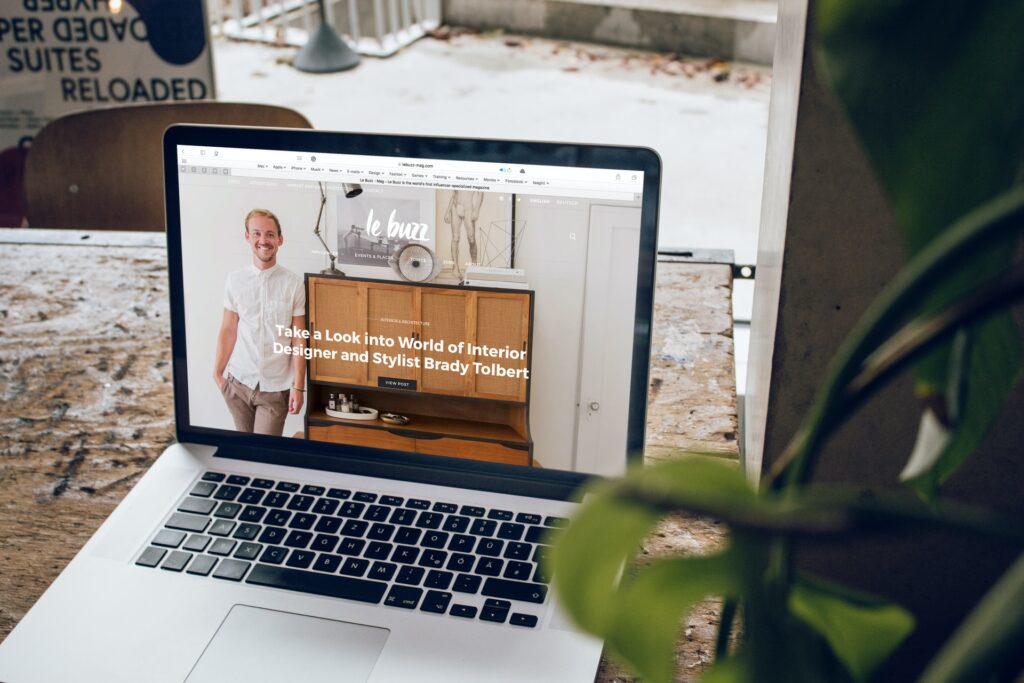
Imagine you’re visiting someone’s home for the first time. You approach their door and notice a porch swing begging for a mid-morning coffee chat. You look down at the doormat and it reads, “Come in, friend.” You smile and enter with confidence.
In a different scenario, you approach someone else’s home for the first time. ( Maybe the first one’s neighbor). It looks like a creepy haunted house: there’s a fake skeleton on the porch and you feel like it’s watching you. The doormat reads, “Enter if you dare.” You hesitate, then run off the property and never return.
Now imagine that the visitor in these situations is actually your customer. They’re looking for cues as to whether they’re at the right house, and the doormat spells it out for them: Come in or Leave.
The doormat is…?
Your homepage headline.
Yes, this is a lengthy metaphor, I’ll admit. But I hope it demonstrated the power of what a headline can do for you: bring in the customers you want and keep out the ones who aren’t for you.
The headline makes the first impression
When you meet a customer in real life, it’s a two-way dialogue. Your customer asks questions and you answer. You list selling points and your customer ‘oohs’ and ‘ahhs’, hopefully reaching for their wallet, right?
On your business’s homepage, it’s no longer a two-person conversation- it’s one-sided. Now you have to anticipate what your customer is needing, and showing how your offering is their perfect solution.
That’s where the headline comes in: it’s your first impression on the visitor. People don’t patiently read your entire website and then make a decision. They read your headline, and then make a decision on whether to stay on your website.
This means that a headline is your one chance to persuade your ideal customer to step through the door and explore what you have to offer.
The right headline for you
But wait, what exactly goes into a headline? Or a subheadline for that matter?
A headline should say your product’s value – whether it’s your product’s impact on the customer’s life or the product itself.
I’d argue, however, that the nuts and bolts of what goes into your headline will vary. There are many ways to write a powerful headline.
We’ll walk you through the basics to get you started. We’ll break down examples of good and bad headlines for you to learn from.
Together, we’ll explore what makes a solid headline, the necessary subheadline, as well as email subject lines and titles for your lead magnets.
What goes into a successful headline?
Ultimately, a great headline is always about the CUSTOMER. Not an endless list of your product’s features. Not your company’s backstory. Not a vague mantra or motto.
A good headline answers the following questions:
- Can the visitor clearly tell what this business is offering?
- Who is this product for?
- How will the customer be transformed?
Let’s see this in real life:
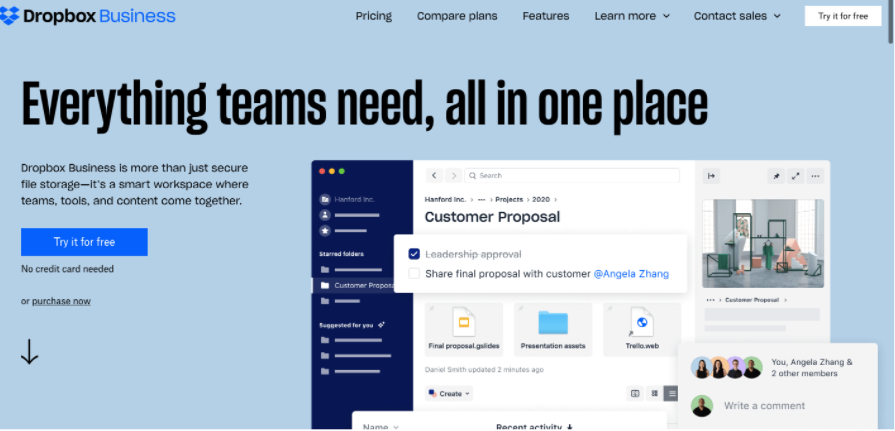
Can the visitor clearly tell what this business is offering?
Yes! It’s a place where all files and workflow ( everything ) for a business are stored together (all in one place). And notice how the headline is written in plain language.
Who is the product for?
Businesses that work in teams.
How will the customer be transformed?
Instead of using multiple programs or keeping files in a million different places, every piece is stored in one place. “It’s a smart workspace where teams, tools, and content comes together.”
Takeaway: The customer will quickly figure out the key pieces of information needed in order to decide whether or not to stay on the web page.
Okay, now let’s look at another example:

Can the visitor clearly tell what this business is offering?
No. We’ve got some adjectives here ( or features) but nothing concrete.
Who is the product for?
No clue. Unfortunately, the subheadline is very generic and doesn’t provide any other information either.
How will the customer be transformed?
We don’t know that one either. But apparently, they’re getting a helping hand!
Takeaway: This is what we mean when we say that listing features isn’t an effective headline.
The visitor has no actual information to work with and will likely move on. Again, let us emphasize how little time people spend deciding whether to stay on a website. ( ~ 3 seconds).
How to avoid generic, watered-down headlines
Another key element to crafting a great headline is that it should speak specifically to YOUR customer. Not to everyone on planet Earth.
It’s a common mistake for small business owners to think that they should make their offering appealing to everyone. You may even be asking, “ Well, why is that bad? Doesn’t casting a wider net mean I’ll get more sales?”
The simple answer is no. If you try to write for everyone, you will captivate the interest of no one. It’s like assuming everyone has the exact same kind of needs, which isn’t the case.
Even big corporations like Walmart don’t market to everyone under the sun. In spite of Walmart offering low prices (a broadly appealing message), there are still certain customers who will never shop at Walmart.
So if even a giant like Walmart doesn’t appeal to everyone, then your business probably won’t either. It’s far more valuable to find out who exactly your customer is, their specific needs, and what they’re looking for. This should dictate your message more than anything else.
Approaches to crafting your perfect headline
Before we dive into some different formulas for you to explore, there are a few things to keep in mind:
- Not every kind of headline is a good fit for your company.
- Most headlines fall in the 6 to 12-word limit.
- It takes practice to write an awesome headline. I challenge you to write 25 before you settle on one.
Okay, now back to those formulas!
Formula #1: Say what your product is.
Formula Source:https://cxl.com/blog/writing-home-page-headlines-for-the-modern-world-3-formulas-that-work/
When your headline answers the simple question of “what is it?” you’re giving the website visitor the gift of clarity.
More clarity = less time for customers to decide on whether to leave or stay = more of your ideal customers sticking around.
Let’s look at some examples:
Basecamp: “ The All-In-One Toolkit for Working Remotely”
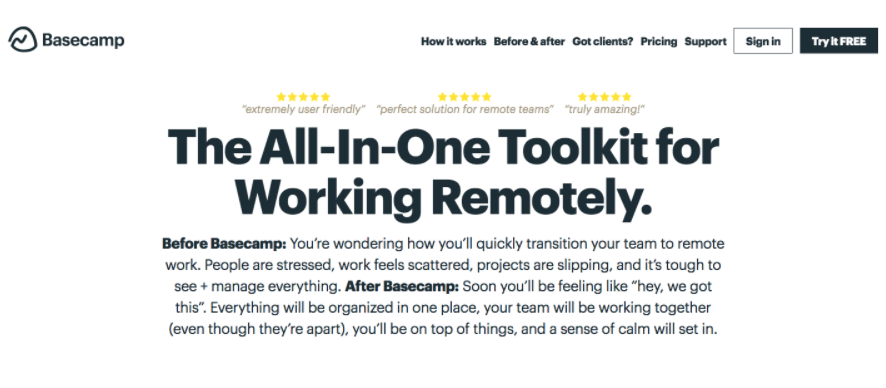
What is Basecamp? The all-in-one toolkit for working remotely.
Hyperflyer: “ Online Ordering System Just for Your Restaurant”
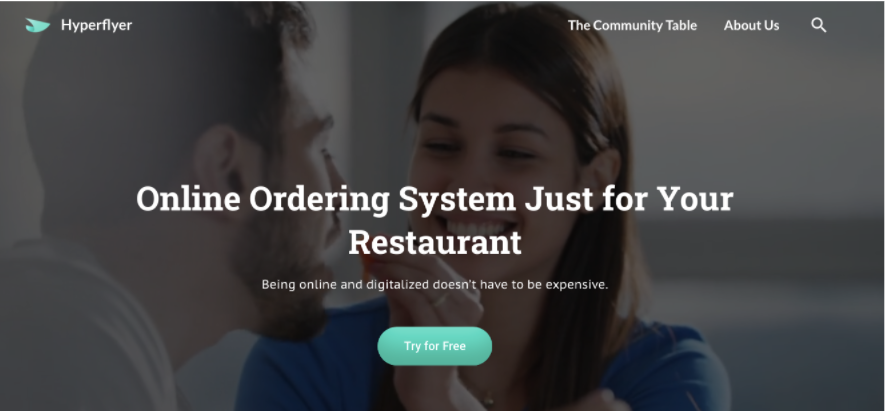
What is Hyperflyer? An online ordering system for individual restaurants.
Gravitas Security: “We test your security before someone else does”
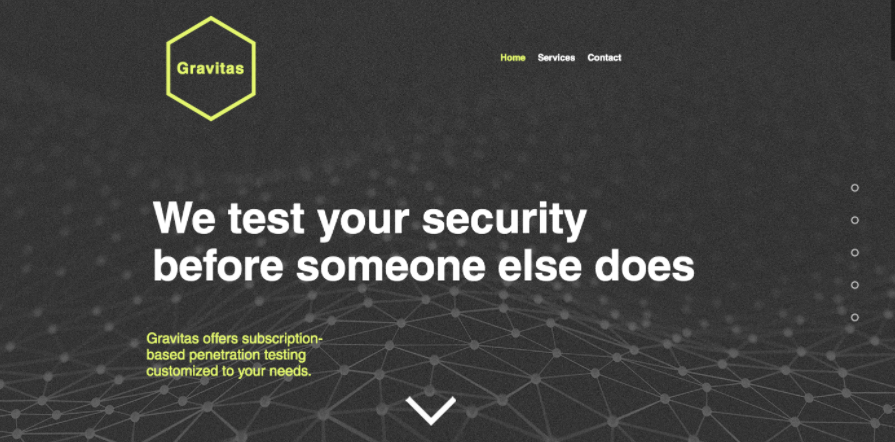
For a service that’s not a tangible product, especially one that people may not understand right away, another route is boiling down your service into a really easy-to-understand description.
What does Gravitas do? They test my security before someone else does
An “almost there” headline…
Bitly: “ Short links. Big results.”

Why do I say that this headline is almost there?
Let’s dissect it further:
- “Short links.” Yes, okay. Short links are good because they’re not a lengthy eyesore on your website or piece of content. But what about them?
Let’s personalize and turn it into a verb and see what happens:
Shorten your links.
Okay.. that’s better. That’s something people need to do sometimes. But it still needs more information, because what is the bigger ‘why’? If I shorten my links, then what will happen?
- “Big results”. Um…What are these big results, exactly? Because “big results” could mean ANYTHING. Bitly could be saying short links leads to winning a million dollars. Or gaining the ability to time travel.
“Big results” is just too vague.
But let’s look at this subheadline: “ A URL shortener built with powerful tools to help you grow and protect your brand.”
Ohhhhh… so that’s what they do.
You know what would make a better headline? Using their subheadline!
Let’s try this:
What is bitly?
A URL shortener built to grow and protect your brand.
Or if we wanted to focus on what the customer can DO with this product:
Shorten your links. Grow & protect your brand.
See the difference?
We went from vague/ unclear to highly specific. Or another way to think of it, is that at first we depended upon the ample time and imagination of the visitor. But now, we took away all of the possibilities of what this product could be, we did the thinking for our visitor, and we made the product CLEAR.
Formula #2: Say what the customer gets from using your product
This approach focuses specifically on the benefit of your product. Think of those classic benefits people enjoy from buying things: save time, save money, lose weight, look younger, etc.
audible: “ Stay informed, connected, and inspired.”

What benefits does a customer receive when they use audible? They stay connected, informed, and inspired.
LendingPoint: “ Get the credit you need for the life you want.”
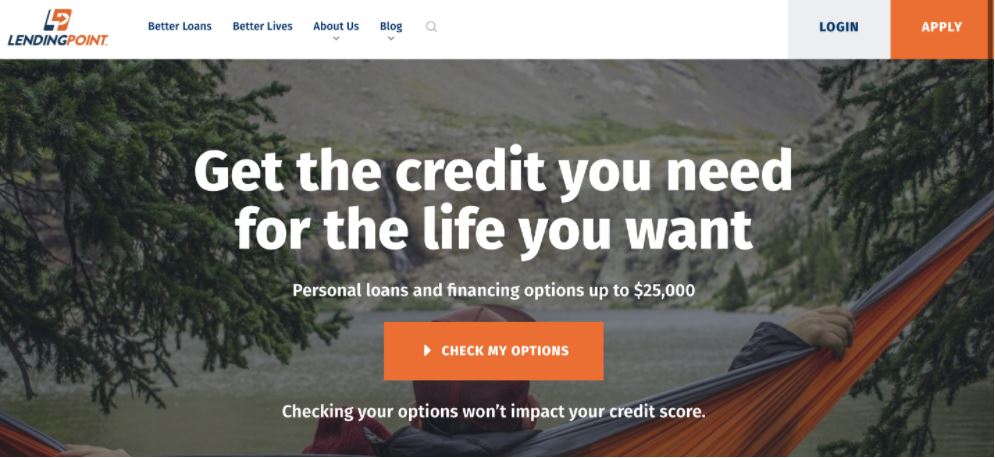
What benefit do customers receive when they use LendingPoint? They get the credit they need for the life they want (generally full of big milestones and goals that require money).
Formula #3: Say what your customer can do with your product
This is perfect for businesses whose customers will use the thing that you’re selling.
Good Rx: “Find FREE Coupons & Save up to 80% on Prescriptions”

What can customers do with GoodRx? They can find free coupons and save money on their prescriptions.
Evernote: “Accomplish More With Better Notes”
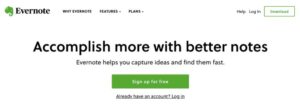
What can customers do with Evernote? Accomplish more by taking better notes.
Wix: “Create Your Own Pro Website”
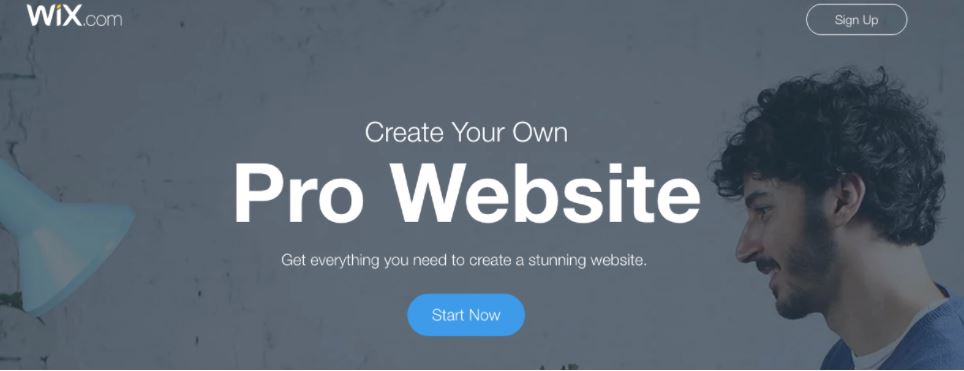
What can customers do with Wix? Create their own professional website.
Subheadlines: The companion every headline needs
Subheaders (or subheadlines) is the equally important text that goes under a homepage’s headline.
Without subheadlines, the customer is left to more guesswork, which takes up their precious time and energy. (And will likely drive them away from your website.)
Subheadlines have a few different functions. We’re going to look at some!
- Subheadlines provide further clarity for the offering.
This is especially helpful if your product or offering isn’t the most straight forward or simple ( that doesn’t mean you can’t boil it down, of course). You should still use an impactful, simple headline on your homepage. But then, by following it up with a sentence or two on what your product is or how it benefits a customer, you significantly reduce confusion.
Let’s revisit an earlier example:
So we know what Gravitas does in its simplest form: they test a customer’s cyber security before someone else (i.e. a hacker) does
But what exactly does that mean concretely? Well, that’s where the subheadline comes in:
“Gravitas offers subscription-based penetration testing customized to your needs.”
Ohhh, so it’s penetration testing. You buy a subscription of it. And then the testing is customized to whatever my company needs.
- Subheadlines expand on the benefits of the offering.
This approach compliments “What it is” types of headlines because it’s like a 1-2 punch: the visitor 1. understands what the product is and 2. how they’ll benefit from it.
Let’s revisit Basecamp’s homepage again.
We know with Basecamp’s headline that it’s an all-in-one toolkit for working remotely. But how will that transform a company? Our subheadline explains it for us, although in sort of a lengthy way.
Here’s a shorter version of the subheader for this homepage:
Everything is organized in one place, your team can work together, and you’ll be on top of things. Cue: that undeniable sense of calm.
We’ve identified the benefits:
- Organization
- Work together
- Staying ahead of workflow
…But the most compelling aspect? A SENSE OF CALM. I included this part because people are most compelled by emotions.
The shorter subheadline still accomplishes its purpose by describing the major benefits a company receives when using Basecamp.
Final thoughts on subheadlines:
- Keep it succinct. Try to aim for a maximum of two sentences.
- Reflect on what would be most advantageous for your subheadline- do you need to clarify more? Expand on the benefits?
- Don’t forget to persuade your customers. Use impactful language that includes power words.
Subject lines: how a few words makes a big difference in your open rate
If you go into your ‘junk’ email, you’ll find all kinds of subject lines vying for your attention: discounts, limited offers, announcements that can’t be ignored, etc.
How many of them do you actually click on?
Yeah… Not that many. It’s actually quite common. In 2020, it was reported by Campaign Monitor, that the average open rate in the US, across all industries, is 17.8%.
Hopefully that comforts you and gives a little perspective: email marketing doesn’t see huge open rates because people simply don’t pay that much attention to non-essential emails.
But…There are ways to still entice your subscribers to open your emails, trust me.
The secret weapon: Subject lines.
Subject lines, like a headline, make the first impression on your subscriber. You only get a few words to stand out from the rest and beckon the person to click on the email. Before we dive into different approaches for writing subject lines, let’s cover the best practices first.
Source:https://bit.ly/3np7fRx
1. Keep subject lines concise.
The average recommended word length is three to five words.
Approximately 70% of emails are opened on mobile phones too, which means that character length also needs to be considered. Iphones show 35-38 characters and Galaxy phones show about 33 characters.
2. Use numbers.
Studies show that people are more likely to open emails when numbers are involved.
3. Use emoticons.
Emoticons have been proven to appear casual, friendly, and enticing to the reader. There are subject line formulas out there that use only emoticons because that’s how powerful they are.
Speaking of formulas… Campaign Monitor has a great list for you to peruse and practice writing subject lines. They make it so darn easy, that we had to include it.
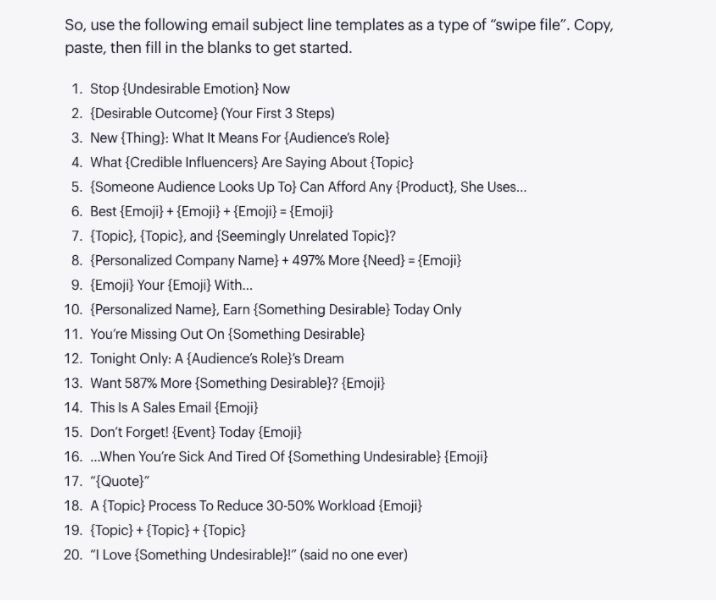
As you go through the list, you’ll notice that many of the formulas use different tactics to grab the viewer’s attention. When you consider each, think about what’s most appropriate for your brand, or how the approach can “filter” through your brand lens.
We’ve compiled a list of these different types of the main subject lines that are shown to increase open rates.
Keep it informational
Just like it says. Quick to read, clear, and to the point. You can use this method to update subscribers, notify them of a payment or shipment confirmation, or announce a new product.

Personalize it
Using your subscriber’s name in the subject line is a great way to pique interest. It feels more like an invitation versus an invasion. You can also include other personal touches, like asking them how they’ve enjoyed their recent purchase, or give recommendations to them based on their last purchase.

The offer that won’t last forever…
Creating a sense of urgency isn’t a bad thing when done correctly. There’s obviously ways to overdo it, but sharing updates on sales/discounts/special offers that are soon to end helps increase that open rate.
![]()
Pique their curiosity
Asking questions or making bold statements is a great way of making someone more likely to open the email. Brainstorm some questions or thoughts your subscriber is likely to have as it relates to your products and test them out.
![]()
Puns / Humor
If being playful is true to your brand, then these kind of subject lines can be successful. Any phrases that are attention-grabbing (not in an obnoxious way), clever, and can make someone chuckle are incredibly useful.
![]()
Play with a variety of these subject lines types. Think about which would be best for your brand or is most appropriate for the kind of your email you’re sending out next.
Hopefully one of the things you’ll be emailing is a lead magnet. And we’ve got you covered there as well!
Last but not least.. .
Titling your lead magnets
As we all know, lead magnets can be a powerful tool for giving potential customers a taste of the quality you’re offering, and ultimately convert those leads. What’s going to make people click on your lead magnets though?
Much like we’ve mentioned before: clear, powerful, and true-to-your-brand titles.
Ultimately, the ebook, quiz, checklist, etc. you’re offering has to be worth someone’s time, and your title should say as much.
Business coach, Melyssa Griffin has a few lead magnets on her landing page, each with a clear but impactful title.
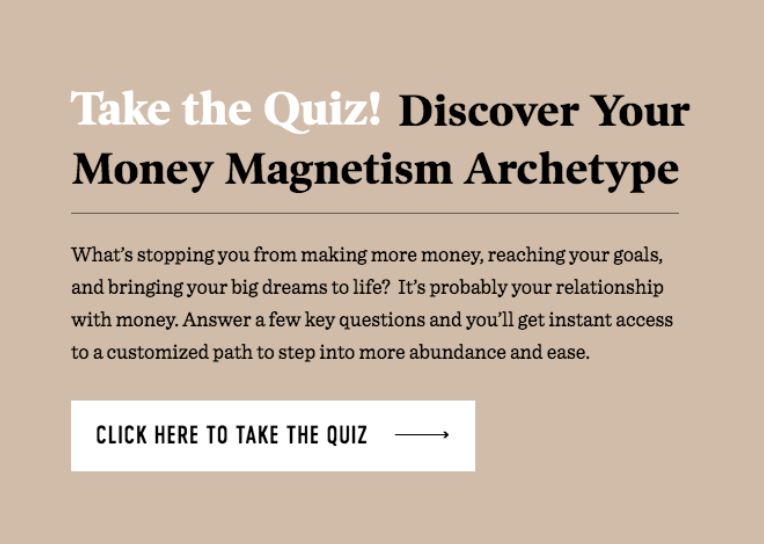
“Discover Your Money Magnetism Archetype”
Melyssa could’ve written a title that was a hundred times more boring. She might’ve titled it along the lines of what the quiz actually identifies: what’s stopping a person from making money.
Instead, she captured a far more compelling way to describe the quiz: how is someone “drawn” to money? And what is this way (archetype) called? She uses the positive (benefit) instead of the problem to entice visitors to click on her lead magnet.
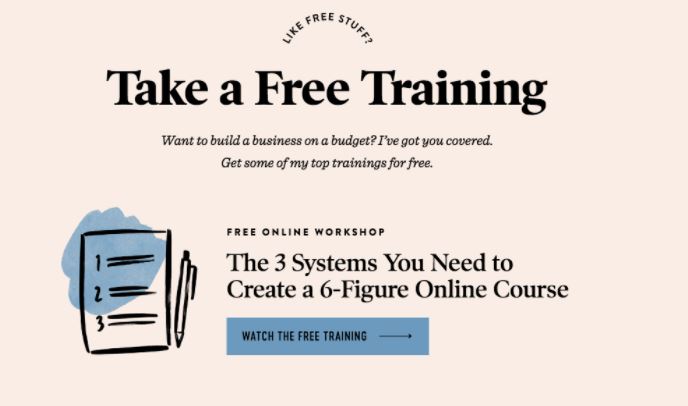
“ The 3 Systems You Need to Create a 6-Figure Online Course.”
This is a more cut-and-dried title, but it’s powerful and simple. Entrepreneurs aren’t aiming for small potatoes, which Melyssa knows. That’s why she includes the term “6-figure” as a way to speak to the goals which business owners are actually pursuing.
Also, much like subject lines, using numbers in your title helps clearly convey the value you’re providing. “Systems” on its own is vague. But “3 Systems”? Specific, tangible, and doable.
In terms of length & content, it’s essential that lead magnet titles are as simple as possible. With confusion comes disinterest and no one clicking on this lead magnet you worked so hard to create.
The Wrap-up
You’ve just taken in a ton of information about a small but super important detail of your business. Try not to feel overwhelmed or like you can’t do this. Small business owners are overcoming the same hurdles you are, everyday!
When you’re encountering mental blocks, confusion, or straight up despair, take a breather. Sometimes the small things point us to the bigger picture: are you clear on your brand? How is your product-market fit? Are you selling to your ideal customer or to everyone? By getting the big pieces in place, you’ll be in a far better place to market your products.
After you’ve digested everything, sit down, write out the headline exercises you want to practice, and get started. The more you practice, the closer you’ll get to writing winning headlines. You’ve got this!
Looking for a little more help?
Headline Bootcamp is our mini comprehensive program for all things related to crafting successful headlines.
You’ll receive:
10 Headline templates
“Headline IQ” Quiz- identifying the headline type for your brand
20 brainstorming prompts
List of 200 power words
5 in-depth walkthroughs of headlines that work.
5 common headline pitfalls to avoid
Good day! I just wish to give you a huge thumbs up for your excellent information you have got here on this post. I am coming back to your blog for more soon.